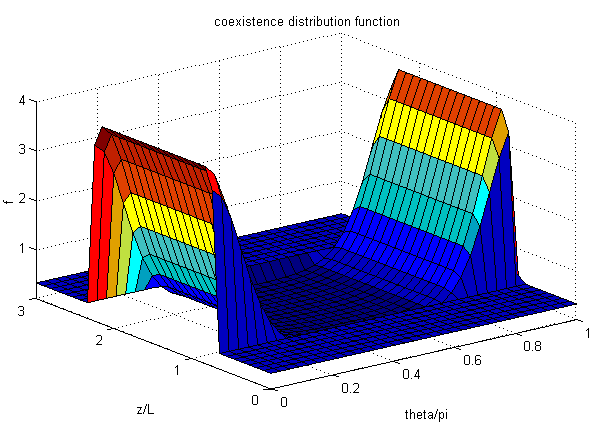Molecular Modeling of Liquid-Crystal Polymer Phase Behavior and Dynamics
| Personnel: | M.J. Green, R.A. Brown, R.C. Armstrong |
| Sponsorship: | This work is supported by the ERC Program of the National Science Foundation under NSF Award Number EEC-9731680, (CAEFF). M.J. Green's funding is also provided by a National Science Foundation Graduate Research Fellowship. |
Liquid crystals are substances that can exist in mesophases, defined as states between isotropic fluids and structured solids. Liquid crystals deform and flow, but they still exhibit anisotropic properties at equilibrium because of order that appears on the molecular level. These unique properties are caused by anisotropy in their shape and by the intermolecular forces between the individual molecules. Liquid crystals (liquidcrystalline polymers in particular) have been used in industrial applications ranging from bullet-proof vests to high-performance cables. Liquid-crystalline polymers are also relevant from a scientific perspective because rigid rod models of liquid-crystalline polymers are one of the simplest polymeric molecular models because of their lack of internal degrees of freedom. The modeling of liquid-crystalline polymers represents one of the simplest avenues to connecting molecular order with the fluid mechanics of a fluid with microstructure.
A fundamental problem in the dynamics and phase behavior of liquid crystals is the treatment of nonhomogeneities in structure. Current theories fail to capture the important physics on all the length scales inherent in liquid crystal systems in a computationally efficient manner. The purpose of this research is to investigate interfaces, spinodal decomposition, and domain interaction in liquid-crystalline polymer system through a general thermodynamic formulation.
Initially, this research will be focused on the numerical resolution of the equilibrium interface between an isotropic (random) liquid crystal phase and a nematic (aligned) phase. Non-equilibrium thermodynamics will allow the study of dynamic processes such as spinodal decomposition, coarsening, and the formation of distinct domains. These physical insights into domain dynamics can then be incorporated into a practical but computationally tractable theory of liquid-crystalline polymer flow behavior.

|
Figure: Liquid crystal coexistence distribution function plot in physical (z) and orientation (theta) space at interfacial equilibrium. |